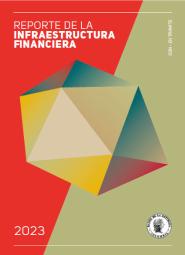Financial Stability Report - First Half 2024 (only in Spanish)
The analysis presented in this edition of the Report concludes that, despite the lower portfolio dynamics, the Colombian financial system continues to have adequate capital and liquidity levels that would be sufficient to face the materialization of extreme low-probability risks at individual and consolidated levels.
 See the report (only in Spanish)
See the report (only in Spanish)
I. Performance of Credit Institutions (CIs)
- Credit institutions in Colombia have adequate capital and liquidity levels to face the materialization of risks at both the individual and consolidated levels.
- In line with the macroeconomic adjustment, credit growth continued to exhibit negative real rates; however, since the end of 2023, it has been contracting more slowly.
- The loan portfolio continued to show deterioration across all types of credit. However, the growth of the non-performing loans has slowed since the end of 2023, except microcredit. Non-performing loans levels remain high compared to their history.
- Over the last six months, CIs' aggregate profitability has remained relatively stable, correcting the downward trend observed since 2022. However, it is below the average for the last five years.
II. Exposure of the Financial System to Households
- Household debt indicators decreased in line with the slower growth of their loan portfolio. The financial burden was below the maximum levels reached in 2022.
- Household loan portfolio quality indicators continued to deteriorate over the last six months, although at a slower pace than the one observed in 2023.
- Despite the slower pace of deterioration in loan portfolio quality indicators over the last six months, uncertainty persists regarding the future dynamics of households' creditworthiness.
III. Exposure of the Financial System to the Corporate Sector
- In 2023, private corporate sector debt fell due to lower investment and Colombian peso appreciation, which impacted foreign currency-denominated debt.
- Most of the corporate sector's foreign currency-denominated debt has exchange rate risk mitigation mechanisms.
- In the context of local economic adjustment and lower investment, the private corporate sector portfolio's non-performing loans indicator showed deterioration in 2023. The deterioration of trade, manufacturing, and construction sectors, as well as of small firms, stands out.
- Credit institutions remain resilient to the possible materialization of adverse credit risk scenarios in the firms' portfolios.
IV. Non-Bank Financial Institutions
- After recovering and returning to pre-pandemic levels, the profitability of non-bank financial institutions has been relatively stable since mid-2023.
- So far in 2024, the assets of open-end collective investment funds reached all-time highs amid the high volatility that characterizes them. In addition, the funds reported better liquidity levels than those recorded in 2023.
V. Ejercicios de estrés
The resilience of credit institutions is evaluated under a hypothetical, adverse, and unlikely scenario characterized by highly restrictive external financial conditions and a strong economic contraction in a low investment environment given the following elements:
- The intensification of geopolitical conflicts would cause a slower-than-expected decline in external inflation.
- Tight external financial conditions and slower global economic growth.
- Gradual settlement of a percentage of foreign investors' local public debt portfolio.
- Increased local inflation expectations (higher price volatility).
- Increase in the local risk premium and higher cost of the country's external financing.
- Expected further deterioration in the loan portfolios of certain sectors and borrowers considered vulnerable to a scenario such as the one described above.
Impacts associated with credit, market, interest rate, funding, liquidity, and contagion risks are considered.
- Two additional stress tests are included to evaluate:
- The resilience of credit institutions with subsidiaries in Central America to devaluations of their external investments in their consolidated financial statements.
- The ability of open-end collective investment funds to face extreme scenarios of mass withdrawals.
- The results of the stress tests suggest that credit institutions would have sufficient capacity to absorb significant losses at the aggregate level. Institutions classified as systemically important have enough equity to face such shocks, as they maintain adequate solvency levels throughout the test.
- In turn, open-end collective investment funds are resilient to extreme redemption shocks.
Presentation of the Financial Stability Report
Boxes included in the report
Box 1: Credit Modifications and Restructurings (Only in Spanish)
Daniela Rodríguez Novoa
Angie Rozada Najar
Box 2: Financial Outlook of Savings and Credit Cooperatives in Colombia (Only in Spanish)
Jorge Cely
Karen Laguna
Camilo Sánchez
Eduardo Yanquen
Box 3: Potential Impact of Decreases in the Interest Rate Cap on Financial inclusion and the Loan Portfolio of Credit Institutions (Only in Spanish)
Mariana Escobar Villarraga
Camila Gamba Tiusabá
David Felipe Moreno Fuentes


 Reports
Reports Boxes
Boxes  Press Releases
Press Releases














































